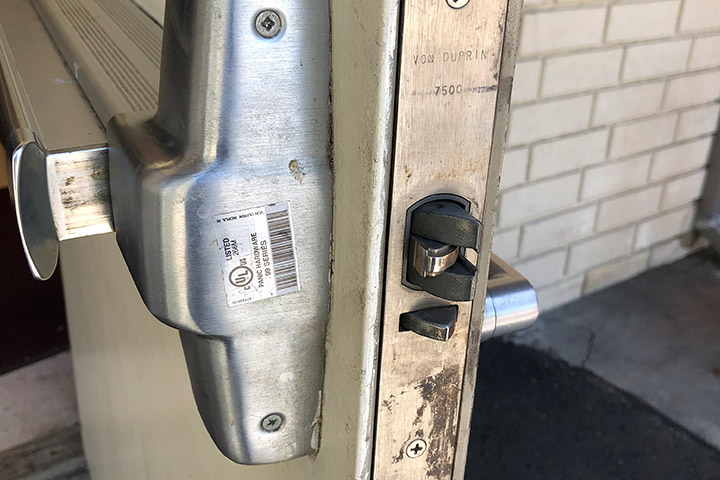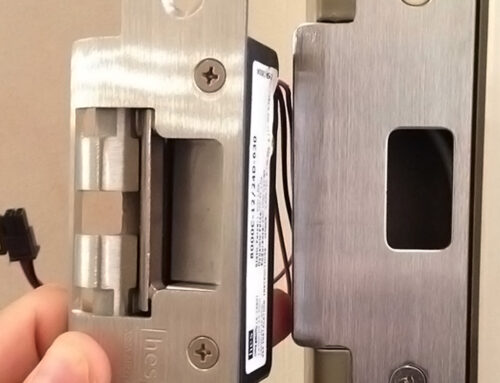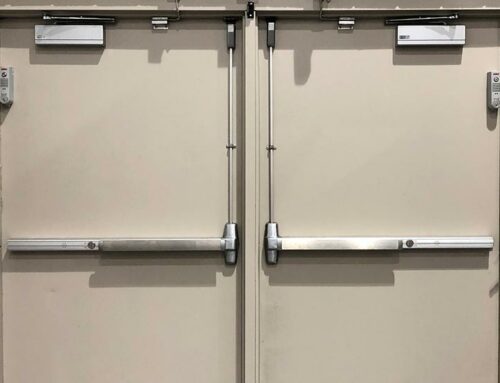When you’re planning out your commercial doors, there is a balance between safety and security. You need to achieve both strong doors and locks that protect the property and safe doors that can be opened easily to allow people to escape dangerous situations. You can have total security and safety. One of the best ways to achieve that is to add panic locks on your emergency exits.
What is a Panic Lock?
When your emergency exits have to be locked, a panic lock will make them safe. A panic lock is a device that makes it very simple for someone approaching the door to unlock it and leave. In fact, all it takes it a touch.
A panic lock looks like a horizontal bar across the inside of the door. All an approaching person has to do is gently touch the bar to releasing the locking mechanism. Typically, someone evacuating the building will press on the door to get out, unlocking it and opening it in one smooth motion, saving time.
After the installation of the panic lock, from the outside, the door is as secure as ever, resisting unlocking. You don’t sacrifice security for this safety feature.
Is a Panic Lock Required by Law?
Your emergency doors may require panic locks by law. You should refer to your local laws to know for certain, but those provided by the International Building Code Requirements are a good starting spot. The IBC requires that you have emergency doors if:
- Your building has assemblies of 50 people or more
- Your building is a school with 50 or more occupants
- Your building is considered high hazard, regardless of whether you have 50 occupants
Typically, you are also required to have panic locks on all fire-rated doors, as these are on evacuation paths and need to be opened quickly in the event of a fire.
Your local commercial door experts should be able to advise you as to whether you are required to have a panic lock and on which doors.
Why Have a Panic Lock?
Even if panic locks are not required on your doors, you may still want to add them. They can make your building safer, protecting your occupants and reducing your liability in the event of a fire, an accident, or some other kind of emergency. In high occupant situations, panic locks can prevent crush injuries as people try to escape through the door by allowing the faster access out. Even if the actual emergency that causes the evacuation doesn’t amount to any damages, crush injuries can be serious, so it is wise to protect your occupants from them.
Other Considerations for Panic Locks
Once you have panic locks on your doors, you cannot add any additional locks to the door.
A panic lock should be a very high-quality lock because it will be the only locking mechanism on the door and it is a safeguard to protect people during serious emergencies. At CLAD, we can help you find a high-quality option that will perform reliably in the worst case scenarios.







